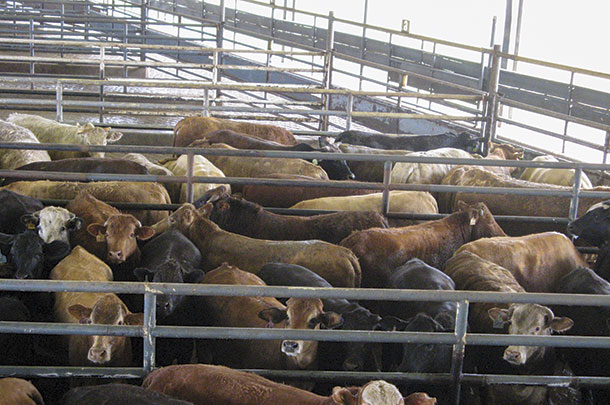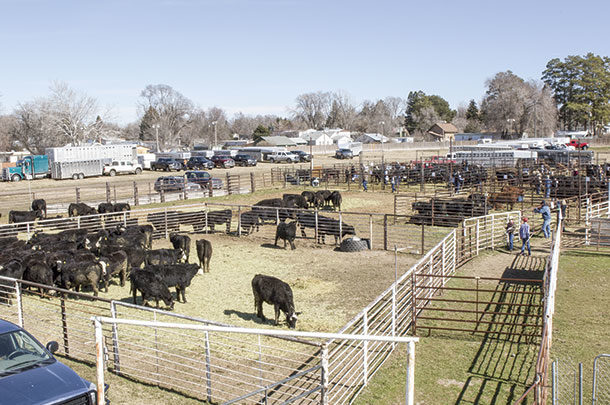During drought, it often becomes necessary to move cattle to states that have grass. Transportation of cattle across state lines can be difficult if proper procedures are not followed.
“All animals must meet the minimum interstate requirements for livestock movements set by USDA. Each state can also require more stringent requirements than what USDA requires,” says Mary Luedeker, Texas Animal Health Commission. “Producers and haulers should always call the state of destination to ensure they meet all entry requirements.”
A list of state animal health officials is available online under Resources on the United States Animal Health Association website. Federal and state regulations can be found online (State regulations for importing animal).
“State animal import requirements often depend on the state they are coming from,” says Luedeker. “All breeding animals are required to have a Certificate of Veterinary Inspection (CVI) and official animal identification. Additional tests are sometimes required for each species or type of livestock. For example, all breeding bulls over 12 months old must have a negative trichomoniasis [trich] test along with a current CVI and official identification to enter Texas.”
Individual animal identification
The USDA requires individual animal identification to facilitate disease traceability. Knowing where and when diseased and at-risk animals are or have been is important to ensure a rapid response. Although animal disease traceability does not prevent disease, it can reduce the number of infected animals and response time in disease investigation. This, in turn, reduces the economic impact on producers and affected communities.
For interstate movement, the USDA requires individual identification of all cattle 18 months old or older, except steers and spayed heifers. Veterinarians are required to record all forms of identification of an individual animal and its approximate age, gender and breed. A CVI should accompany the shipment as well. Acceptable identification methods include official breed association tattoo, freeze or fire brand identifying the individual animal and USDA official eartags. Some states may have more stringent requirements for animal identification.
Before producers can purchase official USDA eartags, they must obtain either a premise identification number (PIN) or a location identification number (LID) from a state animal health official. There are three types of USDA eartags – “840” series RFID (Radio Frequency Identification Device), “840” series non-RFID visual and “840” series ISO-compliant microchip implants. These tags are available from most retail livestock supply outlets.
Certificate of Veterinary Inspection
A CVI, also known as a health certificate, is an official document issued by a veterinarian certifying the animals identified on the document have been inspected and found to satisfy regulations pertaining to their destination. It is normally required that CVIs be issued within the 30-day period preceding shipment.

The USDA requires certificates to contain individual animal identification numbers, number of animals covered by the certificate, purpose of animal movement, points of origin, destination, the consignor and the consignee. Many state CVIs have certification statements such as: “The animals have no history of clinical signs or exposure to contagious or infectious diseases.”
Many producers, such as the Bonds Ranch headquartered at Saginaw, Texas, and J.D. Hudgens, Wharton, Texas, frequently move cattle across state lines and have developed processes for meeting regulatory requirements.
Bonds Ranch is primarily a stocker operation pasturing cattle in approximately 26 Texas counties, 13 states and Canada. Pete and daughter, Missy Bonds, manage the operation and will deliver the appropriate number of stockers to people who have grass and are qualified to manage the cattle. At sale time, profits are divided between the two parties.
“Our herd health programs are under the direction of a veterinarian, who is responsible for issuing timely CVIs and meeting all required treatment and testing requirements. Entry regulations vary from state to state on whether certificates are required for each individual animal or whether one certificate is sufficient for the entire group,” says Missy Bonds. “It is possible for regulations to vary between bulls shipped for breeding and heifers moved for grazing in a different state or country.
“Each load of cattle may require different health treatments and testing depending on where they are going. For instance, South Dakota and certain other states require either quarantine or a topical dewormer application at shipping for scabies, which haven’t been a problem in Texas for years. State regulations are complicated, so we depend on our veterinarian to stay abreast of each state’s requirements and keep our cattle moving across state lines.”
J.D. Hudgins, owned by the fifth and sixth generations of the Hudgins family, is a Brahman seedstock producer and ships cattle interstate as well as international. Coleman Locke serves as president of the corporation and, with his son, John, operates the Locke Division of the ranch.
“We save ourselves a lot of paperwork and hassle by maintaining a certified brucellosis-free ranch, which requires testing our cattle annually,” says Coleman Locke. “When we sell an animal to an out-of-state buyer, the ranch secretary checks the USDA website to learn the entry requirements for the particular state. Besides brucellosis, the most common requirement is trich testing by a veterinarian within 30 days of shipment. This requirement is waived by some states if our veterinarian has certified we are shipping virgin bulls. Some states will accept non-tested bulls if they are placed in quarantine upon their arrival.
“If we plan to ship animals internationally, we immediately notify a freight-forwarding agent who will arrange for transportation. He will also consult the USDA website to determine import requirements for that particular country,” continues Locke. “The freight-forwarding agent works closely with our veterinarian to ensure all required animal testing and treatment is completed within 30 days prior to shipment and that all required health papers are in order.”
Enforcement
Few states have inspection stations at state lines to ensure incoming cattle have proper identification and certification. There are other ways, however, to identify regulation violators. States work together and exchange information when they know of interstate shipments not meeting requirements.
“Texas Animal Health Commission (TAHC) inspectors work roadside stops periodically inspecting paperwork and doing a visual inspection of livestock. TAHC also monitors and inspects Texas livestock markets, feedyards and other livestock-receiving facilities,” says Luedeker. “All CVIs are reviewed, and deficient or disapproved CVIs are investigated. Lastly, state and local third parties are able to submit referrals for investigation of potential noncompliant activity. Similar inspections occur in other states and, at the federal level, violations are recorded in a database.”
Depending on the violation, there are several different penalties assessed. Most states want to achieve voluntary compliance, but there are times when this cannot be achieved and criminal or administrative penalties are assessed.
The above presented information is a broad view of interstate livestock movement regulations and is not all- inclusive. Before moving cattle across state lines, consult the USDA website and then confirm that information with a state animal health official. Then work with a veterinarian to ensure that federal and receiving state regulations are met. ![]()
PHOTO 1: Be sure that import regulations are met before shipping cattle to another state. Photo by Mike Dixon.
PHOTO 2: Each load of cattle may require different health treatments and tests based on their destination. Photo by Robert Fears.
Robert Fears is a freelance writer based in Georgetown, Texas.








